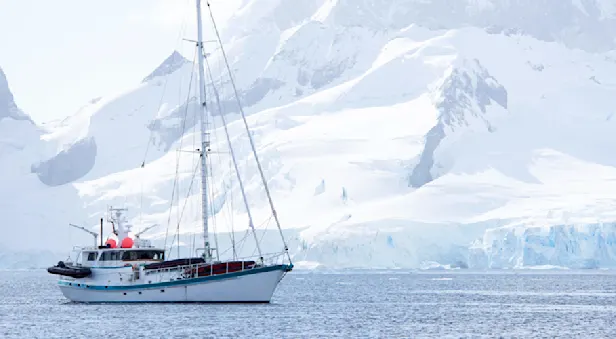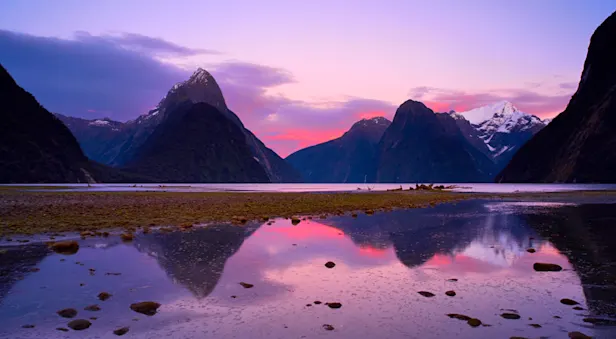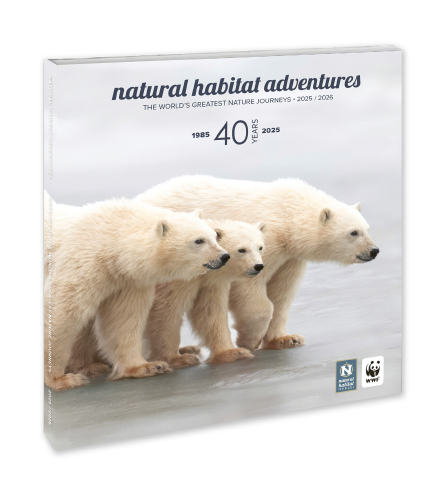Know Before You Go
New Zealand Fur Seal Facts | New Zealand Wildlife Guide
New Zealand fur seals (Arctocephalus forsteri) inhabit New Zealand and the southern and western shores of Australia.
Physical Characteristics
Sharp, elongate snouts with long whiskers and visible external ears.
Covered by two layers of dark brown fur that often appears black when wet.
Extreme sexual dimorphism—while the average female weighs approximately 88 pounds and measures 3.9 feet in length, the average male weighs close to 350 pounds and measures 5.3 feet in length.
Habitat
New Zealand fur seals spend their lives on shore and in the ocean. During the mating season, they stay close to the rocky shoreline, sheltering their pups in areas with large boulders and caves near intertidal pools.
Feeding Habits & Predation
The New Zealand fur seal typically feeds beyond the continental shelf at depths between 40 and 70 feet; dive depth varies with time of night, with deepest dives being near dusk and dawn. Females have been known to dive to depths of 780 feet for as long as 11 minutes—the deepest and longest dives of any fur seal. They consume an array of sea life, including octopus, arrow squid, jade mackerel, hagfish, flounder and barracuda. Fur seals mainly hunt after sunset until dawn, due to much of their prey being vertical migrators (creatures who come to the water’s surface to feed at night and descend in the light of day).
The primary predators of fur seals are orcas and large sharks. Hooker’s sea lions have been known to hunt young fur seals on the islands of the sub-Antarctic, but this has not been observed on the continent.
Breeding and Reproduction
Male fur seals reach sexual maturity at between 5 and 6 years of age, while females become sexually mature at 4 to 6 years old. A male fur seal establishes and guards a territory between the ages of 8 and 10 years. In early November, males arrive along the rocky coastline to compete for territories. Once his spot along the coast is occupied, as many as 16 females will join and breed with him. Females come to shore in mid-November and select a mate. They give birth to a single pup each year between December and January, which was conceived during the previous mating season.
After nursing her pup constantly for between 6 and 12 days, the female leaves the shore to forage at sea for a short duration. These excursions grow longer as the pup ages. The pup will continue to nurse from its mother for about 300 days and will take solid food before this time. Pups are very lively, amusing themselves by playing with reef fish, seaweed and other young seals. This may serve was a way to practice social behavioral skills and hunting. After being weaned, the young disperse. Females and pups can be found at the breeding colony year-round. Males return to the sea in mid-January, after having fasted while remaining onshore for up to two months during the mating season.
Conservation
During the 1700s and 1800s, Maori, the indigenous people of New Zealand, hunted fur seals for food. When Europeans came to New Zealand, they established commercial sealing industries, and the demand for seal fur and meat reduced the population by more than 90 percent. In response, the country granted New Zealand fur seals full protection in 1894.
Though it is illegal to hunt New Zealand fur seals, they continue to be threatened by human activities. Ocean pollution affects their overall health, and fur seals risk becoming entangled in marine debris. Fur seals accidentally become trapped in commercial fishing nets and often drown. In addition, some fishers intentionally capture and kill fur seals due to a misguided belief that these predators deplete their fish stocks, even though the diet of a fur seal mainly consists of noncommercial fish species and other marine organisms. Header Credit: Bernard Spragg via Wikimedia Commons
See Fur Seals on These Adventures

Sailing Antarctica: A Polar Wildlife Expedition
Those with a passion for true adventure won't find a more exhilarating thrill than exploring Antarctica on an intimate voyage by private motorsailer—for just seven guests! Kayak and camp on the ice, too.

























